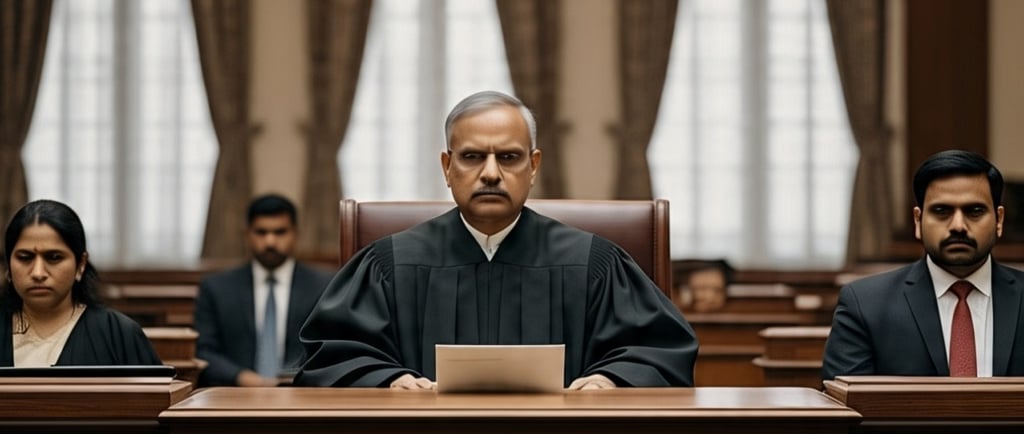Supreme Court Overhauls Judicial Promotion Framework: Restores LDCE Quota and Reintroduces Bar Practice Requirement
In a landmark judgment dated May 20, 2025, the Supreme Court of India, exercising its inherent and original jurisdiction, has issued far-reaching directives to reform the structure and criteria of appointments and promotions within the Indian judiciary. This pivotal decision in All India Judges Association & Others vs. Union of India & Others not only revisits earlier judicial pronouncements but also introduces a renewed emphasis on merit-based selection and practical experience in the legal profession.
5/23/20253 min read


The ruling, authored by Chief Justice B.R. Gavai along with Justices Augustine George Masih and K. Vinod Chandran, addresses eight critical issues that have long influenced the appointment and elevation of judicial officers across the country.
1. Restoration of 25% Quota for LDCE
One of the central directives is the restoration of the 25% quota for Limited Departmental Competitive Examination (LDCE) for promotion from Civil Judge (Senior Division) to the cadre of District Judges. This quota, initially recommended by the Shetty Commission and endorsed by the apex court in the 2002 AIJA judgment, had been reduced to 10% in 2010 due to implementation challenges and vacant posts.
The Supreme Court has now found that with an increasing pool of eligible candidates, the time is ripe to revert to the original 25% quota. This decision, it noted, would serve as an incentive for junior judges to pursue excellence and achieve accelerated promotion.
2. Reduction of Qualifying Experience for LDCE
To make the LDCE quota viable, the Court has reduced the minimum experience required as a Civil Judge (Senior Division) from five to three years. Additionally, candidates must have a cumulative experience of seven years across both Junior and Senior Division roles to qualify for LDCE.
This amendment aligns with practical observations that, in many states, officers qualify for regular promotion around the same time as they become eligible for LDCE, thereby nullifying the intended incentive. Reducing the requirement helps distinguish LDCE as a path for expedited advancement.
3. Introduction of LDCE for Junior to Senior Division Promotions
Breaking new ground, the Court has mandated the introduction of a 10% LDCE quota for promotion from Civil Judge (Junior Division) to Senior Division. This aims to identify and fast-track meritorious candidates early in their careers, reinforcing a culture of performance-driven progression in the judiciary.
4. Calculation of Quota Based on Cadre Strength
The Court clarified that the reserved quota for LDCE must be computed based on the total cadre strength, not just the annual vacancies. This uniform method of calculation is expected to bring consistency and predictability across states and High Courts.
5. Mandatory Suitability Test for Regular Promotions
For the 65% of promotions to District Judges made on a merit-cum-seniority basis, the Court has emphasized the need for objective suitability assessments. High Courts must frame or update rules to include parameters such as legal knowledge, quality of judgments, annual confidential reports, disposal rates, and performance in interviews.
6. Reintroduction of Minimum Bar Practice Requirement
Reversing its own 2002 direction, the Court has restored the requirement of a minimum of three years’ practice as an advocate for eligibility to appear in the Civil Judge (Junior Division) recruitment examination. This is based on widespread concerns raised by High Courts and state governments about the ineffectiveness and impracticality of recruiting fresh graduates with no courtroom experience.
The Court cited behavioral and procedural shortcomings observed in novice judges and emphasized that practice at the Bar provides vital exposure to court dynamics, which pre-service training alone cannot compensate for.
7. Counting Experience from Provisional Enrolment
In a nuanced approach, the Court directed that the three-year practice period should be counted from the date of provisional enrolment with a State Bar Council rather than from the date of passing the All-India Bar Examination (AIBE). This move aims to minimize delays and ensure a fair opportunity for candidates across diverse educational and administrative timelines.
To prevent misuse, safeguards were prescribed: candidates must produce a practice certificate either from a Principal Judicial Officer or a senior advocate (with at least 10 years of standing), attesting to their active engagement in legal practice. Time spent as a Law Clerk with judges will also be counted as relevant experience.
8. Timelines for Implementation
To ensure swift compliance, the Court has directed all High Courts to amend the relevant service rules within three months. State governments must approve these changes within a further three months. Ongoing recruitment processes, if already initiated, will not be affected by these changes.
Implications and Significance
This judgment is poised to reshape the recruitment and promotion landscape in the Indian judiciary. By reinstating and recalibrating the LDCE quota, it revitalizes a meritocratic approach to judicial elevation. Simultaneously, it balances the need for practical legal training through the reintroduction of Bar experience requirements, a move that could improve judicial conduct, court management, and overall efficiency.
The verdict also underscores the Supreme Court’s willingness to revisit its past decisions in light of evolving ground realities. It reflects a pragmatic and responsive approach to policy implementation in judicial administration—aligning structural reforms with practical challenges and feedback from stakeholders.
Commendation of Assistance
The judgment concluded with special appreciation for amicus curiae Shri Siddharth Bhatnagar and his team, who diligently coordinated inputs from High Courts and state governments and played a pivotal role in shaping the Court's considered opinion.
Conclusion
The 2025 Supreme Court judgment is not merely a reiteration of earlier positions but a comprehensive blueprint for nurturing merit and accountability in India’s judicial services. By addressing structural bottlenecks and aligning incentives with competence, the decision has the potential to enhance both the quality and integrity of the country’s lower judiciary—thus strengthening the edifice of justice at its very foundation.
